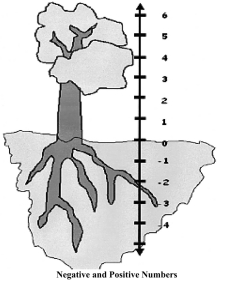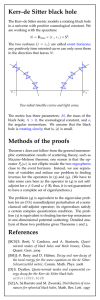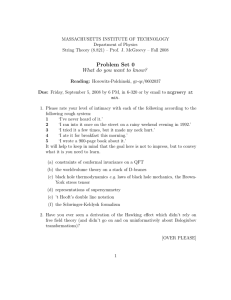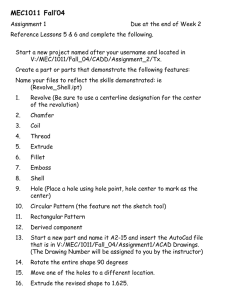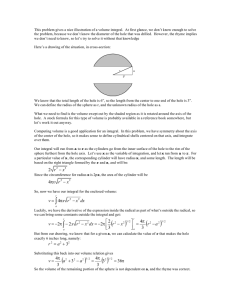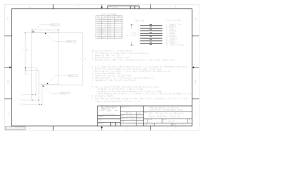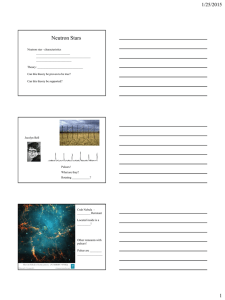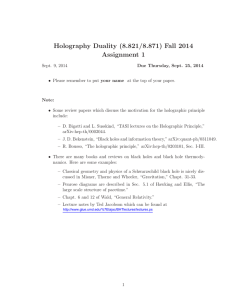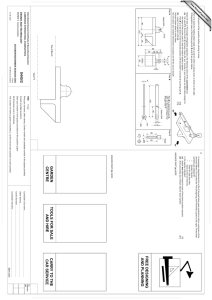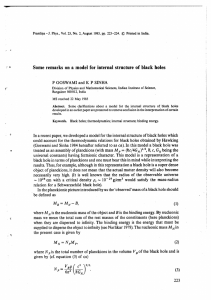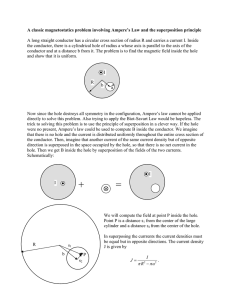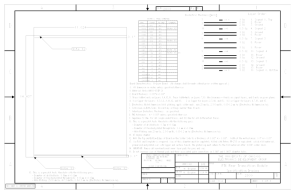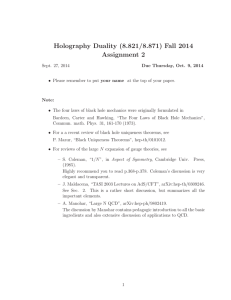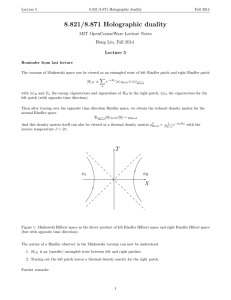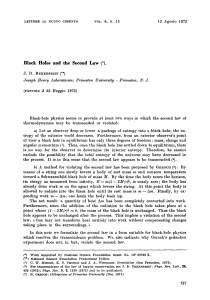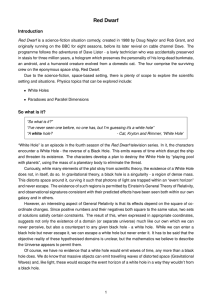Quiz 3 for Physics 176 Professor Greenside Tuesday, February 23, 2010
advertisement
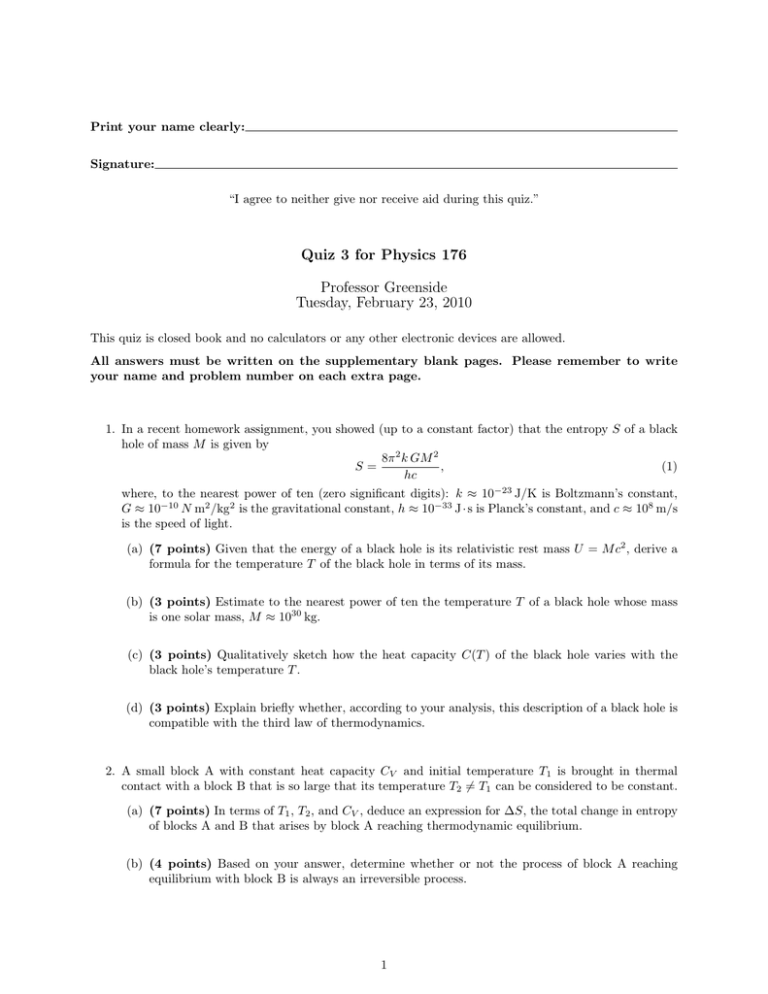
Print your name clearly: Signature: “I agree to neither give nor receive aid during this quiz.” Quiz 3 for Physics 176 Professor Greenside Tuesday, February 23, 2010 This quiz is closed book and no calculators or any other electronic devices are allowed. All answers must be written on the supplementary blank pages. Please remember to write your name and problem number on each extra page. 1. In a recent homework assignment, you showed (up to a constant factor) that the entropy S of a black hole of mass M is given by 8π 2 k GM 2 S= , (1) hc where, to the nearest power of ten (zero significant digits): k ≈ 10−23 J/K is Boltzmann’s constant, G ≈ 10−10 N m2 /kg2 is the gravitational constant, h ≈ 10−33 J · s is Planck’s constant, and c ≈ 108 m/s is the speed of light. (a) (7 points) Given that the energy of a black hole is its relativistic rest mass U = M c2 , derive a formula for the temperature T of the black hole in terms of its mass. (b) (3 points) Estimate to the nearest power of ten the temperature T of a black hole whose mass is one solar mass, M ≈ 1030 kg. (c) (3 points) Qualitatively sketch how the heat capacity C(T ) of the black hole varies with the black hole’s temperature T . (d) (3 points) Explain briefly whether, according to your analysis, this description of a black hole is compatible with the third law of thermodynamics. 2. A small block A with constant heat capacity CV and initial temperature T1 is brought in thermal contact with a block B that is so large that its temperature T2 6= T1 can be considered to be constant. (a) (7 points) In terms of T1 , T2 , and CV , deduce an expression for ∆S, the total change in entropy of blocks A and B that arises by block A reaching thermodynamic equilibrium. (b) (4 points) Based on your answer, determine whether or not the process of block A reaching equilibrium with block B is always an irreversible process. 1 3. (8 points) For a two-state paramagnet consisting of N magnetic dipoles that has N↑ dipoles pointing up, the multiplicity Ω(N, N↑ ) is given by µ ¶ N . (2) Ω= N↑ Use Stirling’s formula n! ≈ (n/e)n to find an approximate formula for Ω in the limit 1 ¿ N↑ ¿ N . Your final expression should have the form Ω ≈ (a/b)c where a, b, and c are expressions that don’t involve factorials. 2



